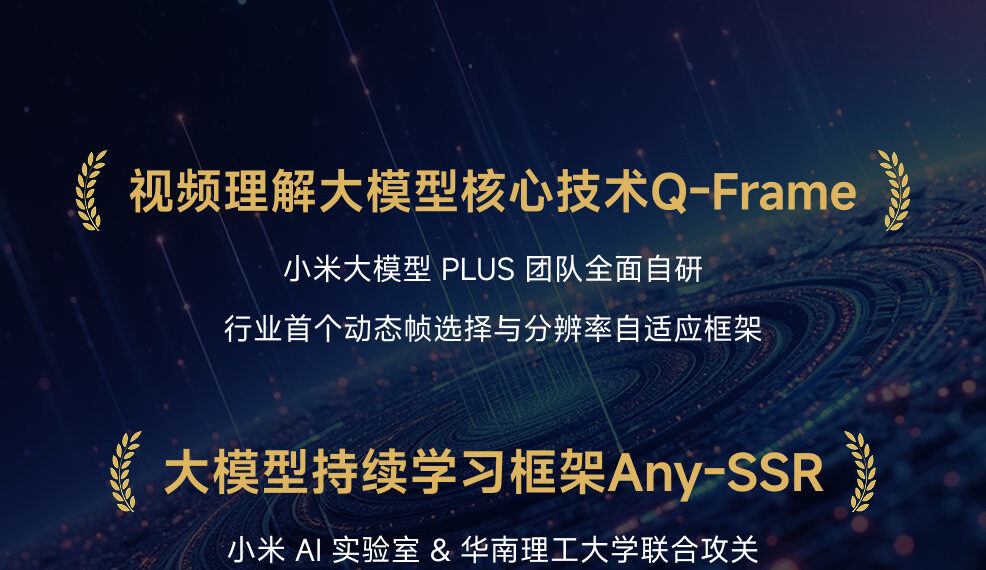Select Language:
On July 8, Xiaomi Technology announced that two of its AI research papers have been recognized by leading global academic conferences. Notably, these papers introduce several groundbreaking innovations, marking significant advancements in addressing the “catastrophic forgetting” challenge faced by large language models in continuous learning.
One of the papers focuses on video understanding models, showcasing the company’s proprietary Q-Frame technology. This innovation includes the first dynamic frame selection and resolution adaptation framework in the industry, as well as an algorithmic framework that can be deployed seamlessly without training, compatible with various existing video understanding models on the market. The paper introduces three key innovations: Cross-modal Query Retrieval (CQR), Query-aware Frame Selection (QFS), and Multi-Resolution Adaptation (MRA). These developments enhance the ability to capture the most relevant video content related to user queries, increasing the effective information yield by fivefold.
The second paper presents the Analytic Subspace Routing (Any-SSR) framework, which effectively tackles the critical issue of “catastrophic forgetting” in large language models. This challenge has long been a significant bottleneck in the industry, hindering the performance stability and knowledge accumulation capability of these models during continuous learning processes. The Any-SSR framework innovatively employs an analytical routing mechanism to dynamically allocate different tasks to independent subspace learning, minimizing task interference. Furthermore, it combines Low-Rank Adaptation (LoRA) with analytical routing to achieve seamless integration of new and old knowledge while enabling dynamic learning.
Xiaomi also disclosed that approximately 25% of its projected 30 billion yuan research and development investment in 2025 will be directed towards AI-related initiatives. Over the next five years, from 2026 to 2030, the company plans to invest an additional 200 billion yuan in core technology sectors.







